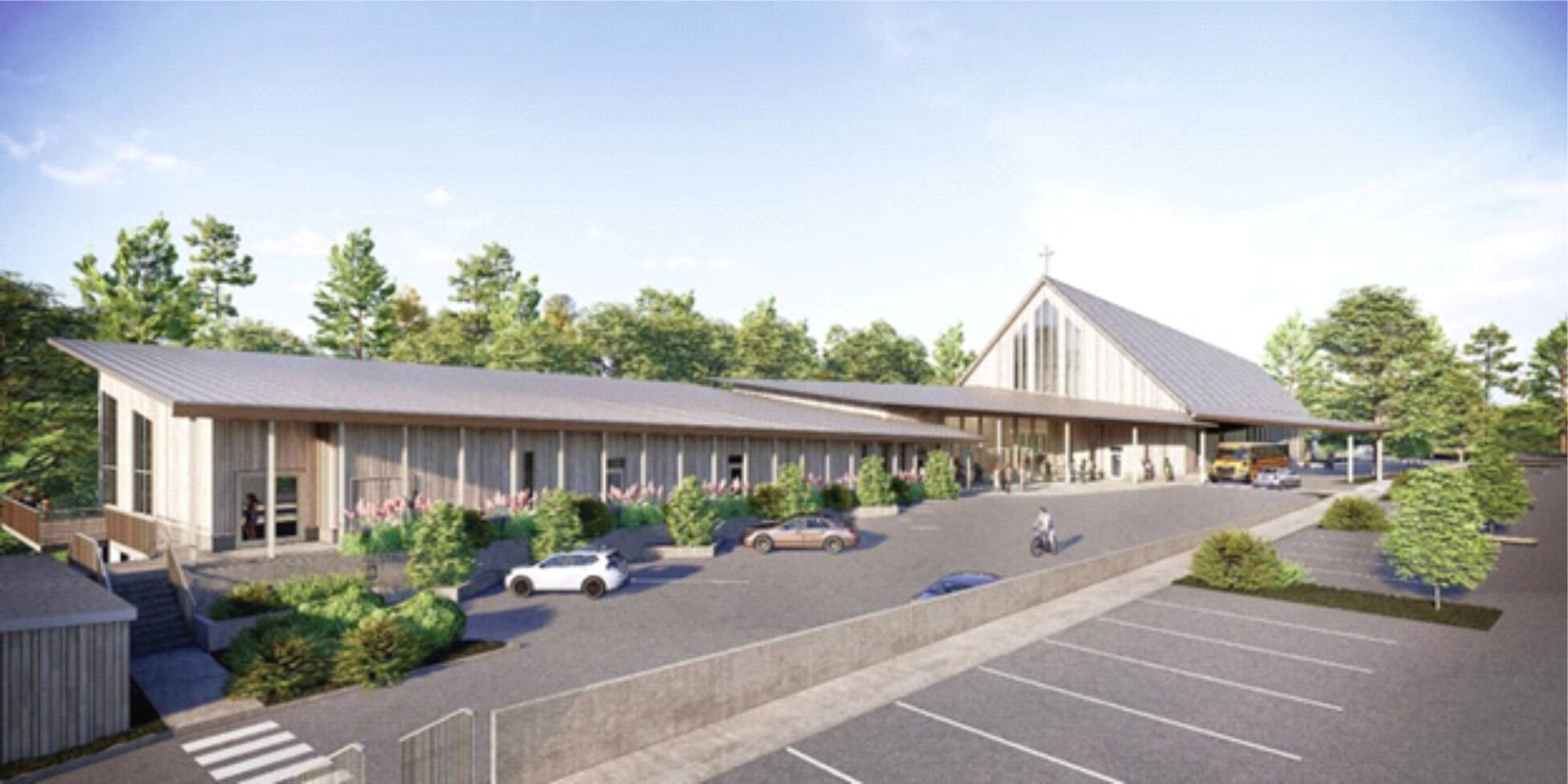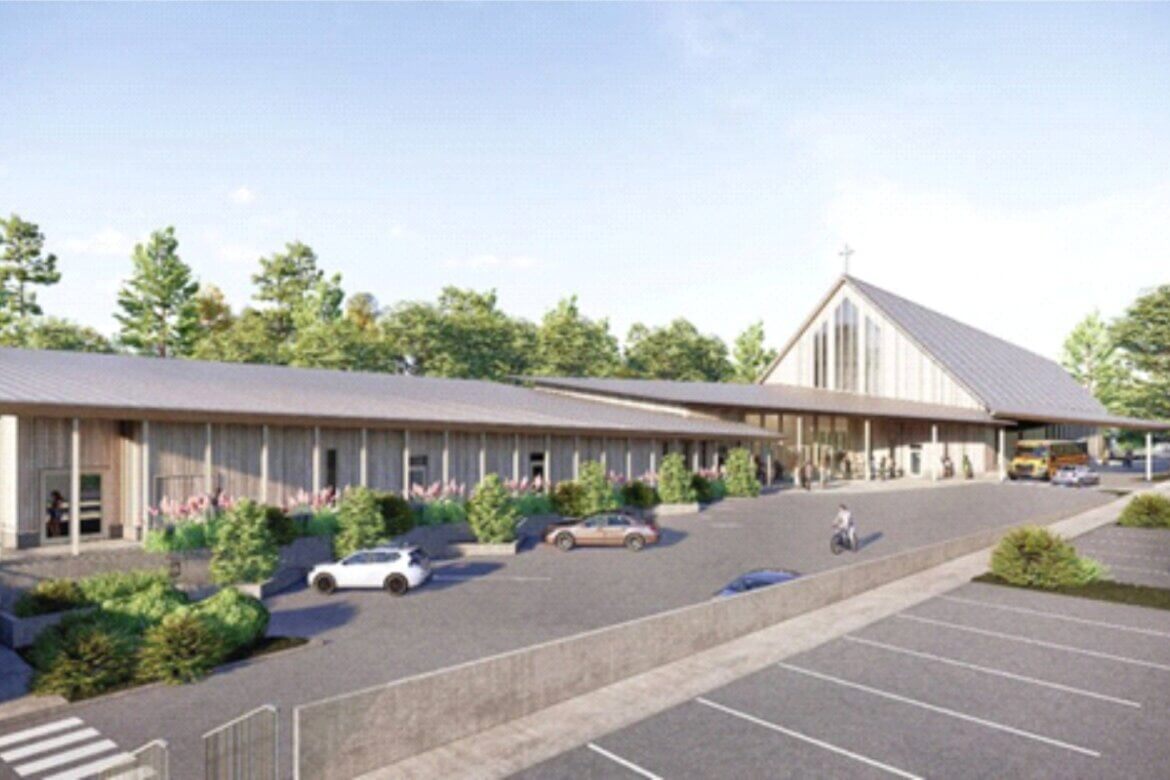Victoria Emulates Vancouver with Mega-Parish
Darron Kloster
Volume 37 Issue 10, 11 & 12 | Posted: January 3, 2023

INTRODUCTION
This story needs certain background (and foreground) introduction. Historically, even during Bishop Remi De Roo’s progressive era, 1962-1999, Our Lady of the Rosary parish in Langford, a suburb of Victoria, was the most traditionalist of parishes, the slowest to follow Vatican II, and the bishop let it find its own pace.
Victoria Diocese did not amalgamate parishes in those days, rather the Diocese opted for joint buildings with Anglican and United Church congregations in the ecumenical spirit of the times. Now at a time of radically diminishing numbers of Catholics (see ‘Other News” articles “Canada Census Shows 2 Million Fewer Catholics” and “People Leaving Church in ‘droves’ Warns Mary McAleese) when 17 smaller parishes on Vancouver Island are being reduced to mission status, Langford pastor Dean Henderson presents his parish as bucking the trends.
What it actually represents is the creation of mega parishes in the Vancouver Archdiocesan model. It is true that Langford as a city has a burgeoning population, but as Bishop De Roo pointed out in the past, it is the immigrant populations that are boosting numbers temporarily but only for one generation.
After that the same decline has to be expected as we have seen in the “Canada Census Shows 2 Million Fewer Catholics” story. The question becomes: Is denial of this reality a proper basis for optimism and successive sustainable development? The first such amalgamation by an ultra-traditionalist priest in the Comox Valley where three parishes were united led to structural building problems by such short sightedness in the 1990s. Hopefully proper financing and construction values are not influenced by romantic sentimentalism of returning to the long past good old days.
As Roman Catholic congregations across the country grapple with declining attendance, Our Lady of the Rosary parish in Langford blessed ground Friday for a new church to handle its overflowing worshippers.
“We are bucking the trends,” said Father Dean Henderson as the parish joined with dignitaries and First Nations to celebrate the start of construction of a new home on a seven-acre property on Irwin Road.
The project will see a new Our Lady of the Rosary church with a capacity of 500 — almost triple the size of its current church on Goldstream Avenue — as well as a 450-seat community hall, gathering rooms and a daycare with 32 spaces. Initial infrastructure is also being installed for a kindergarten-to-Grade 4 school in the future.
“We are growing simply because our demographics are so phenomenal,” said Henderson.
He said Langford’s population — which has grown by about 30% over the past four years — is driving the demand for a larger church, as young families and retirees relocate to the West Shore. Among those newcomers are Catholic immigrants from Mexico, Central and South America, the Philippines, Nigeria and India, said Henderson.
“In our parish, there is really a wide-open-armed, sincere welcome for everyone,” said Henderson.
He said the parish’s Thursday-night Spanish rosary group brings in several parishioners and offers a “sense of solidarity.”
Recent immigrants often struggle in their new environments with finding employment and assimilating into the community — getting their children into school, for example, said Henderson, adding the church can be a place for them to find support and strength.
Our Lady of the Rosary parish encompasses a large swath of Catholics between parishes on Burnside Road and Sooke.
The current church — established more than 70 years ago — holds about 200 people, but many masses exceed that with as many as 300 packed into the space.
Plans for a new church have been on and off the table for decades. The Irwin Road property was acquired about 30 years ago by parishioners, said Henderson, but the plans lacked a unified vision.
“A big part of it was the property was way out in the toolies at the time … there was nothing there, no road or a way for people to get out there. So the vision kind of died.”
The property, now next to the massive Westhills development, was a turkey farm and processing plant that had long been closed, and was often referred to by locals as Gobbler’s Gulch.
The Catholic Diocese bought the property from parishioners soon after, but the church re-acquired the land when it sold its current location to Royal Roads University last year. Royal Roads, in a partnership with Camosun College, University of Victoria and the Justice Institute of B.C., is building a campus on the land.
“So that’s why this day is very exciting,” said Henderson.
“We have people in the parish who have waited and longed for a new church for the better part of 30 years. It’s been a long, hard slog, but it’s a beautiful day today.”
Bishop Gary Gordon, delegates from the province and First Nations representatives from the Esquimalt and Ahousaht Nations took part in the ceremonies Friday. First Nations representatives offered prayer and song, and talked about the roles everyone, including the church, must play with Truth and Reconciliation and the painful past of residential schools.
Henderson said a meeting room in the new church will be dedicated to First Nations as a gathering place to welcome families from all over the Island.
Langford Mayor Stew Young said he was pleased to see the project finally coming to fruition.
The new Langford campus project on the church site will see a $77.8-million investment from the provincial government for construction of the building, and $18.5 million from Royal Roads University for the land purchase and an additional $500,000 for capital costs.
Capital spending will also include $1 million from the University of Victoria and $200,000 from Camosun College.
The City of Langford will invest $27.5 million in parking for the campus, as well as road-infrastructure upgrades and green spaces, including $1.5 million in funding over 10 years for development and support of an Innovation Studio to help incubate new businesses.
Henderson said Our Lady of the Rosary Parish is required to relinquish its current property by Sept. 30, 2023. The new church and hall might not be completed by that time, but Henderson said a portion, such as the hall, could be available to continue services.
Darron Kloster

